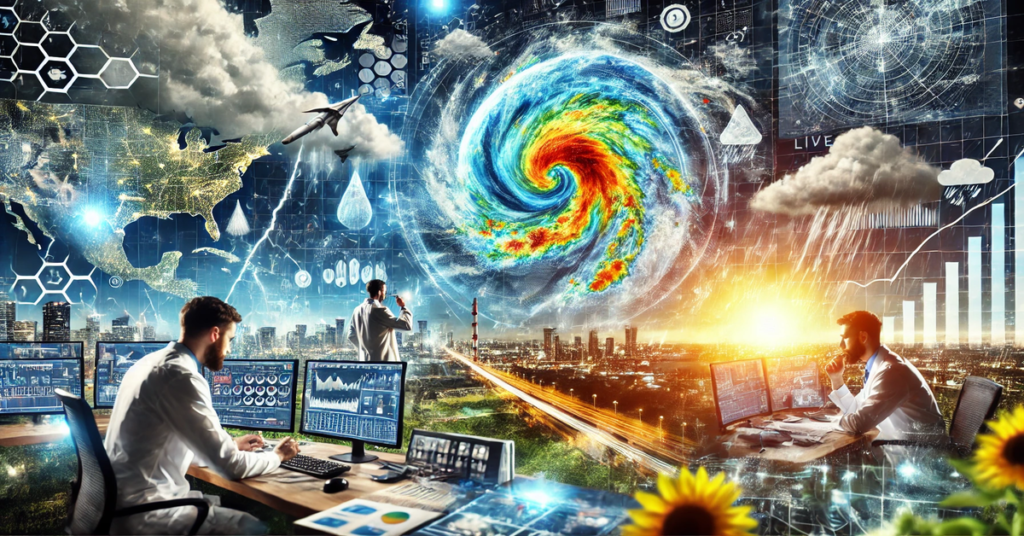The Weather Channel, often abbreviated as TWC, is a household name synonymous with reliable weather forecasting and timely updates. Founded in 1982, it has grown into one of the most trusted sources for meteorological information in the United States and beyond. This article delves into the history, operations, technology, impact, and evolution of The Weather Channel, illustrating its role in shaping how we interact with weather data today.
A Brief History of The Weather Channel
Founding and Early Days
The Weather Channel’s was the brainchild of television meteorologist John Coleman and entrepreneur Frank Batten. It launched on May 2, 1982, with the vision of providing round-the-clock weather news to viewers across the United States. Coleman envisioned a network dedicated exclusively to weather, filling a niche that no other broadcaster addressed at the time.
The initial reception was mixed, with skeptics doubting whether a channel solely devoted to weather could sustain viewership. However, the persistent need for weather information and the channel’s commitment to accuracy quickly gained it a loyal audience.
Growth and Milestones
By the late 1980s, The Weather Channel’s had expanded its offerings, integrating radar imagery, local weather updates, and advanced meteorological data. In the 1990s, the channel began incorporating lifestyle-related programming, including weather documentaries and storm coverage.
One of the key milestones was the development of “Local on the 8s,” a segment providing localized weather updates every 10 minutes. This feature became a staple of the channel, offering viewers real-time, relevant information tailored to their specific regions.
Technological Evolution
The advent of the internet and mobile technology marked a new era for The Weather Channel’s. Recognizing the changing landscape, the channel launched its website in 1995, followed by mobile apps that provided weather forecasts, alerts, and radar imagery on-the-go. Today, The Weather Channel’s operates across multiple platforms, including television, web, and mobile, ensuring it remains accessible to a global audience.
The Operations of The Weather Channel
Meteorological Expertise
At the heart of The Weather Channel’s success is its team of expert meteorologists. These professionals use advanced tools and models to interpret weather data, providing forecasts that are both accurate and comprehensible to the public. The channel employs state-of-the-art technology, including Doppler radar, satellite imagery, and computer modeling, to ensure its forecasts remain reliable.
Content Production
The Weather Channel’s produces a diverse range of content beyond traditional weather forecasts. This includes:
- Severe Weather Coverage: Detailed reports on hurricanes, tornadoes, blizzards, and other extreme weather events.
- Educational Programming: Documentaries and series focusing on climate change, weather phenomena, and environmental issues.
- Lifestyle Features: Segments on how weather impacts travel, health, and outdoor activities.
Digital and Mobile Presence
The channel’s mobile app and website have revolutionized how users access weather information. Features such as real-time radar, weather alerts, and interactive maps have made weather data more accessible than ever. Integration with smart devices, including voice assistants, has further expanded its reach.
The Role of Technology
Advanced Forecasting Tools
The Weather Channel’s leverages cutting-edge technology to deliver precise weather forecasts. Key tools include:
- Doppler Radar: Used to detect precipitation, wind, and storm activity.
- Satellite Imagery: Provides real-time images of weather systems across the globe.
- Computer Models: Simulates atmospheric conditions to predict future weather patterns.
AI and Machine Learning
In recent years, The Weather Channel’s has embraced artificial intelligence (AI) and machine learning to enhance its forecasting capabilities. By analyzing vast datasets, these technologies can identify patterns and provide hyper-local predictions with remarkable accuracy.
Integration with IoT
The rise of the Internet of Things (IoT) has enabled The Weather Channel’s to gather data from a network of sensors and devices, including smart home systems and wearable technology. This data contributes to more detailed and localized weather insights.
The Impact of The Weather Channel
Public Safety
One of the most significant contributions of The Weather Channel’s is its role in public safety. By providing timely warnings about severe weather events, it helps communities prepare and respond effectively. The channel’s coverage of hurricanes, tornadoes, and wildfires has been credited with saving lives and minimizing property damage.
Awareness and Education
The Weather Channel’s has played a vital role in educating the public about weather phenomena and climate change. Its documentaries and series, such as “Storm Stories” and “The Climate 25,” have raised awareness about the science behind weather and its broader implications.
Economic Impact
Accurate weather forecasts are crucial for various industries, including agriculture, transportation, and tourism. The Weather Channel’s data supports decision-making in these sectors, helping businesses optimize operations and reduce losses.
Challenges and Criticism
Competition
The proliferation of weather apps and websites has increased competition for The Weather Channel’s. While its brand remains strong, maintaining relevance in a crowded market is an ongoing challenge.
Balancing Commercial and Public Interests
As a commercial entity, The Weather Channel’s must balance profitability with its commitment to public service. Critics have occasionally accused it of sensationalizing weather events to boost viewership.
Adapting to Climate Change
Climate change poses a unique challenge for weather forecasting. The increasing frequency and intensity of extreme weather events require The Weather Channel’s to continuously refine its models and methodologies.
The Future of The Weather Channel
Expanding Digital Offerings
As consumers increasingly rely on digital platforms for information, The Weather Channel’s is likely to continue expanding its online and mobile presence. Innovations such as augmented reality (AR) weather presentations and immersive experiences could redefine how users interact with weather data.
Partnerships and Collaborations
Collaborating with tech companies, research institutions, and government agencies will be crucial for The Weather Channel’s future. These partnerships can facilitate access to new technologies and datasets, enhancing forecasting accuracy.
Focus on Sustainability
With growing awareness of environmental issues, The Weather Channel’s is expected to intensify its focus on sustainability and climate education. By highlighting the impacts of climate change and promoting sustainable practices, it can play a pivotal role in driving positive change.
Conclusion
The Weather Channel’s has come a long way since its inception in 1982. From a niche television network to a multi-platform powerhouse, it has consistently evolved to meet the changing needs of its audience. By leveraging advanced technology, providing critical public safety information, and raising awareness about climate change, The Weather Channel’s has cemented its place as an indispensable resource for weather information.
FAQs
1. When was The Weather Channel founded?
The Weather Channel was founded on May 2, 1982.
2. What is “Local on the 8s”?
“Local on the 8s” is a feature on The Weather Channel that provides localized weather updates every 10 minutes.
3. How does The Weather Channel use technology for forecasting?
The Weather Channel uses tools such as Doppler radar, satellite imagery, computer models, and AI to deliver accurate forecasts.
4. Is The Weather Channel available outside the United States?
Yes, The Weather Channel has a global presence through its website, mobile app, and partnerships with international broadcasters.
5. What role does The Weather Channel play in public safety?
The Weather Channel provides timely warnings and updates on severe weather events, helping communities prepare and respond effectively.
6. How has The Weather Channel addressed climate change?
The Weather Channel raises awareness about climate change through documentaries, series, and educational content, highlighting its impact and promoting sustainable practices.







